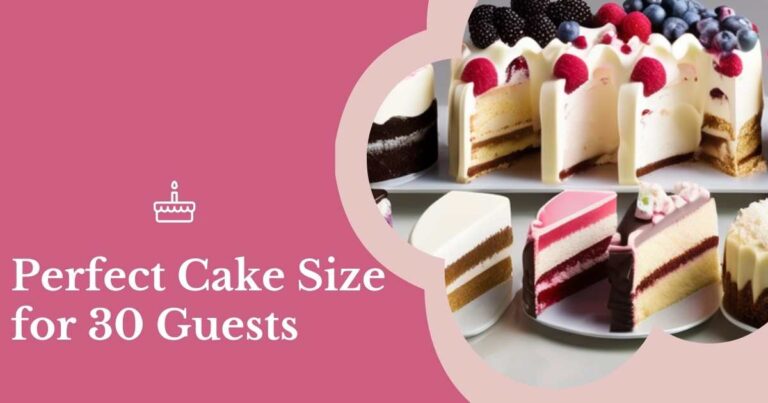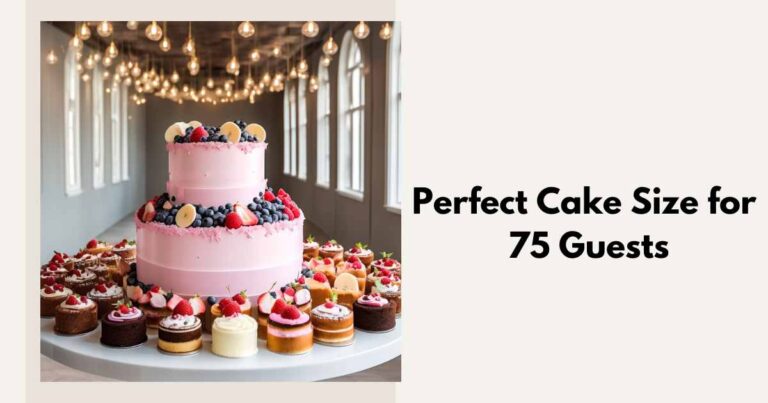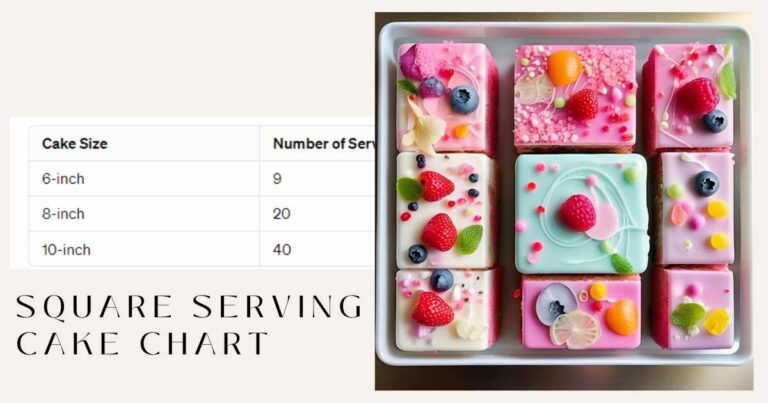The ultimate guide to gluten-free baking provides a comprehensive resource for anyone seeking to bake without gluten, offering tips, recipes, and expert advice. In this guide, you’ll learn the basics of gluten-free baking, including the different types of gluten-free flour and how to substitute them in your favorite recipes.
Discover essential techniques for achieving the perfect texture and taste in your gluten-free baked goods and troubleshooting tips for everyday challenges. Whether you have a gluten intolerance or want to explore the world of gluten-free baking, this guide will empower you to create delicious and satisfying treats that everyone can enjoy.

Credit: www.okonomikitchen.com
What Is Gluten-Free Baking?
Gluten-free baking refers to preparing baked goods without using gluten-containing ingredients. Gluten is a protein found in wheat, barley, and rye, and it can cause digestive issues for some individuals. People choose gluten-free baking for various reasons, including having celiac disease or gluten sensitivity.
Celiac disease is an autoimmune disorder where consuming gluten triggers an immune response, damaging the small intestine. Gluten sensitivity, on the other hand, leads to discomfort and digestive problems when gluten is consumed. Individuals can enjoy a wide range of delicious baked goods made from alternative flours like almond, coconut, or rice flour by opting for gluten-free baking.
Gluten-free baking has gained popularity in recent years as more people recognize the benefits of eliminating gluten from their diets and the increasing availability of gluten-free ingredients in stores.
Understanding Gluten
Gluten is a protein in grains like wheat, barley, and rye. Its sticky properties give the dough its elasticity. When consumed by those with gluten intolerance or celiac disease, it can trigger various adverse reactions. These include digestive issues, fatigue, and even damage to the small intestine.
In traditional baking, gluten is crucial in providing structure and texture to baked goods. However, alternative ingredients are necessary for individuals following a gluten-free diet to achieve similar results. Gluten-free flours, such as almond, coconut, or rice flour, can be used instead.
Additionally, xanthan gum or psyllium husk is often added to mimic the binding properties of gluten. Understanding the effects of gluten and its role in baking is essential when exploring the world of gluten-free baking.
Common Gluten-Free Ingredients
Gluten-free baking has become increasingly popular in recent years, with people seeking alternatives to traditional wheat flour. There are various gluten-free flours and starches available that can be used as substitutes. One common alternative is rice flour, which has a light texture and mild flavor.
Another option is almond flour, which adds a nutty taste to baked goods. Tapioca starch, on the other hand, helps to bind ingredients together and gives a chewy texture. Coconut flour is also widely used and adds moisture and richness to recipes.
Additionally, buckwheat flour, made from a gluten-free grain, is a versatile choice that works well in sweet and savory dishes. Experimenting with these alternatives can open up a new world of gluten-free baking. So go ahead and give them a try!
Essential Baking Tools
Gluten-free baking requires essential tools to ensure successful results. To start, a high-quality mixer is necessary for thoroughly combining gluten-free ingredients. A sturdy spatula is also crucial for scraping down the sides of the mixing bowl and incorporating all the ingredients.
Investing in accurate measuring cups and spoons can make a significant difference in achieving the correct ratios and consistency. A reliable oven thermometer also ensures that the temperature is calibrated correctly, preventing under or over-baking. It’s also essential to have a non-stick baking mat or parchment paper to avoid sticking and ensure easy removal.
Lastly, a cooling rack allows baked goods to cool evenly and avoid excessive moisture buildup. Utilizing these must-have tools and following proper techniques, you can master the art of gluten-free baking for delicious treats every time.
Substituting All-Purpose Flour
Substituting all-purpose flour in gluten-free baking requires a few key steps. Start using a gluten-free flour blend in your recipes as a direct substitute for regular flour. Look for blends containing rice flour, potato starch, tapioca flour, and xanthan gum for optimal results.
When converting regular recipes to gluten-free, adjusting the liquid ingredients is crucial. Gluten-free flours absorb more liquid, so you may need to increase the amount slightly. Additionally, consider using binders like eggs, flaxseed, or chia seeds to improve the texture and structure of your baked goods.
Experiment with different gluten-free flour substitutes, such as almond flour, coconut flour, or buckwheat flour, to find the best option for your specific recipe. With these recommendations and some practice, you’ll be well on your way to mastering delicious gluten-free baking creations.
Replacing Binders And Thickeners
Achieving the perfect texture in gluten-free baked goods requires thoughtful substitutions for binders and thickeners. Instead of relying on gluten, consider alternatives like xanthan gum, guar gum, or psyllium husk. These ingredients effectively bind ingredients together, ensuring your baked goods have the proper structure.
For a thickening agent, opt for potato starch, arrowroot powder, or tapioca starch. These alternatives can help create the desired consistency in your gluten-free recipes. Experiment with combinations and ratios to find the best results for your baked goods.
Replacing binders and thickeners may take some trial and error, but with practice, you can master gluten-free baking and delight your taste buds. So get creative in the kitchen and start baking delicious gluten-free treats that everyone can enjoy!
Egg Replacements In Gluten-Free Baking
Replacing eggs in gluten-free baking can be challenging, but several options are available. To achieve structure and moisture in your recipes, consider using ingredients like applesauce, mashed bananas, or ground flaxseeds mixed with water. These substitutions often work well in cakes, muffins, and bread.
Another option is using yogurt or buttermilk, which can add moisture and a tangy flavor to your baked goods. You can use gelatin, agar agar, or arrowroot powder mixed with water for a binding agent. These alternatives can help hold your ingredients together, just like eggs would.
Additionally, you can explore commercial egg replacers designed explicitly for gluten-free baking. Experimenting with different substitutions will help you find the perfect replacement for eggs in your gluten-free recipes, ensuring delicious and successful results every time.
Mixing And Combining Ingredients
To achieve the perfect blend in gluten-free baking, following best practices when mixing batters and doughs is crucial. Start by thoroughly incorporating each ingredient, ensuring even distribution. Mix wet and dry ingredients separately before combining them. This method prevents clumping and allows for a uniform texture.
Consider using a stand or electric hand mixer to save time and effort. Remember to mix slowly to avoid overmixing, which can lead to a dense final product. Additionally, gently fold in delicate ingredients like fruits or nuts to minimize their breakage.
By following these techniques, you’ll create gluten-free batters and doughs that are evenly mixed and result in delicious baked goods.
Rising And Leavening
Achieving a good rise in gluten-free baked goods can be a challenge. Different leavening agents offer varying results. Yeast, for example, is a reliable option for creating height and a light texture in bread and buns. On the other hand, baking powder is often used in quick bread and biscuits to provide a quick rise without needing a long fermentation process.
Xanthan gum and guar gum are commonly used in gluten-free baking to improve the elasticity and structure of the dough, leading to a more satisfactory rise. It’s also important to consider the ratio of leavening agents to flour and other ingredients, as using too much or too little can affect the outcome.
Experimenting with different combinations and techniques is vital to achieving the ideal rise in gluten-free baking.
Enhancing Flavor And Texture
Gluten-free baking can be a delight with these tips for enhancing flavor and texture! Try using natural flavorings like vanilla extract or citrus zest to add deliciousness to your gluten-free treats. For an extra kick, experiment with spices such as cinnamon, nutmeg, or cardamom.
Incorporating fruits like applesauce or mashed bananas adds sweetness and helps retain moisture. Consider using alternative flours like almond, coconut, or buckwheat to improve the texture of your baked goods. Adding an extra egg or two can produce a softer and more tender final product.
Don’t forget to mix the batter thoroughly to ensure an even distribution of ingredients. With these techniques, your gluten-free baked goods will burst with flavor and have the perfect texture to satisfy cravings. So go ahead and indulge in the joys of gluten-free baking!
Avoiding Dryness And Crumbling
Gluten-free baking can be a challenge, particularly when avoiding dryness and crumbling. Fortunately, there are strategies you can implement to combat these issues. One key factor in preventing dryness is using the right combination of gluten-free flour and starches.
This helps to replicate the structure and moisture content that gluten provides. Additionally, incorporating ingredients such as xanthan gum or psyllium husk can improve your gluten-free baked goods’ texture and binding properties. Another tip is to increase the amount of liquid used in your recipes, as gluten-free flours tend to absorb more moisture.
Lastly, mixing your batter or dough thoroughly is essential to distribute the ingredients and activate the binding properties evenly. By implementing these strategies, you can achieve moist and delicious gluten-free baked goods without worrying about dryness and crumbling.
Achieving A Light And Fluffy Texture
Gluten-free baking can often be challenging, but the proper techniques can achieve a light and fluffy texture. Consider using a combination of gluten-free flour, such as almond flour, rice flour, and tapioca starch. These alternative flours can help create a more tender crumb in your baked goods.
Additionally, incorporating leavening agents like baking powder or baking soda can add some lift to the texture. Another tip is to beat the eggs or egg whites separately and then fold them into the batter. This helps incorporate air and create a lighter texture.
Finally, don’t forget to be gentle when mixing your batter to avoid developing too much gluten. With these methods, you can bake gluten-free cakes and cookies that are not only delicious but also have a tender and fluffy texture. Happy baking!
Solutions For Gummy And Dense Results
Gluten-free baking can sometimes result in gummy or dense textures, but don’t worry! There are techniques to overcome these issues. First, use the right combination of gluten-free flour, such as almond, rice, or tapioca flour. Experiment with different ratios until you find the perfect blend.
Secondly, incorporate xanthan gum or psyllium husk into your recipes to improve the texture and structure of your baked goods. These binding agents help mimic the elasticity that gluten provides. Thirdly, don’t overmix your batter or dough. Overmixing can lead to excess air and a denser final product.
Finally, consider using ingredients that add moisture and tenderness, like applesauce or yogurt. With these troubleshooting tips, you can achieve light and fluffy results in your gluten-free baking endeavors. Happy baking!
Classic Gluten-Free Bread Recipe
Gluten-free baking can be challenging, but with this ultimate guide, you’ll master it quickly. Let’s start with a classic gluten-free bread recipe that yields a delicious loaf. Follow these step-by-step instructions for a soft and flavorful result. First, gather all your ingredients and measure them accurately.
Mix the gluten-free flour blend, yeast, salt, and sugar in a bowl. Next, add warm water and oil gradually, stirring until a dough forms. Knead the dough for a few minutes until it becomes smooth and elastic. Place it in a greased loaf pan and allow it to rise until doubled in size.
Finally, bake it in a preheated oven until golden brown. With these tips, you’ll achieve a mouthwatering gluten-free bread that everyone will love.
Decadent Gluten-Free Desserts
Decadent gluten-free desserts are a true delight, and with these recipes for gluten-free cakes, cookies, and pies, you can create indulgent treats that everyone can enjoy. From moist and fluffy chocolate cakes to chewy and gooey chocolate chip cookies, these gluten-free desserts will satisfy your sweet tooth.
Experiment with alternatives like almond or coconut flour to achieve the perfect texture and taste. Don’t be afraid to get creative with flavors and toppings, whether a rich vanilla frosting on a luscious carrot cake or a dollop of whipped cream on a homemade blueberry pie.
With this ultimate guide to gluten-free baking, you’ll discover that restricted diets don’t have to mean compromising on taste and enjoyment. So dive into these recipes and indulge in delicious desserts without worrying about gluten.
Frequently Asked Questions For The Ultimate Guide To Gluten-Free Baking
What Are The Benefits Of Gluten-Free Baking?
Gluten-free baking offers numerous benefits, such as improved digestion, increased energy levels, and reduced inflammation. It also allows individuals with celiac disease or gluten sensitivity to enjoy delicious baked goods without adverse effects.
Can I Use Gluten-Free Flour As A Substitute In All Recipes?
While gluten-free flour can be used as a substitute in many recipes, it may not yield the same results as traditional flour. Experimentation and adjusting the ratios of other ingredients like liquids and binders may be necessary for successful gluten-free baking.
How Can I Maintain The Texture And Taste Of Gluten-Free Baked Goods?
To maintain the texture and taste of gluten-free baked goods, you can use a combination of gluten-free flour, such as rice flour, almond flour, and tapioca flour, to mimic the elasticity of gluten. Adding xanthan gum or psyllium husk powder can also help bind and enhance the texture.
What Are Some Common Gluten-Free Baking Mistakes To Avoid?
Common gluten-free baking mistakes include using too much or too little liquid, overmixing the batter, not allowing enough time to rest, and not following specific instructions for the chosen gluten-free flour blend. It’s essential to follow recipes and make adjustments as needed carefully.
Are There Any Tips For Converting A Recipe To Gluten-Free?
When converting a recipe to gluten-free, it’s advisable to start with recipes with similar textures to the original. Use a reliable gluten-free flour blend, adjust the amount of liquid, and consider adding binders like xanthan gum or psyllium husk powder.
Finally, be patient and willing to experiment to achieve the desired results.
Can I Substitute Gluten-Free Flours In A 1:1 Ratio With Regular Flour?
In most cases, gluten-free flour cannot be substituted in a 1:1 ratio with regular flour. Different gluten-free flours have varying properties, so following specific recipes and measurements is essential. Some recipes may require a combination of different gluten-free flours to achieve the best results.
Conclusion
To sum up, mastering the art of gluten-free baking is possible with the proper knowledge and techniques. You can create delicious and satisfying gluten-free treats by understanding the role of alternative flours, binders, and leavening agents. Experimenting with different recipes and ingredients will help you find the perfect balance and create unique flavors.
Don’t forget to pay attention to the texture and consistency of your baked goods, as it can significantly affect the outcome. Always read labels and be mindful of cross-contamination to ensure a gluten-free experience. With patience, practice, and creativity, you can delight your taste buds and impress your friends and family with gluten-free baking.
So go ahead, grab your apron, and embark on the delicious journey of gluten-free baking!






